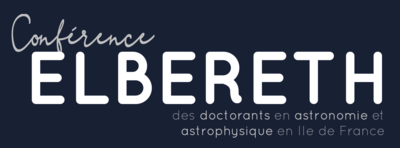Orateur
Description
In the case of an optical link with a LEO satellite, it is crucial to maximize the duration of the downlink,
even at low elevations, in order to transfer the largest amount of data possible at each pass. However, in
this context, amplitude fluctuations (or scintillation) are challenging the operation of Adaptive Optics
(AO) systems, starting with their wavefront sensing subsystems.
Indeed, low elevations imply a strong perturbation regime as the propagation distance through turbulent
atmosphere layers increases, causing log-amplitude variance to reach saturation, i.e. with propagation
conditions beyond Rytov’s approximation [1].
In the case of a Shack-Hartmann Wavefront Sensor (SHWFS), scintillation induces a wide intensity
range across the pupil resulting in some subapertures being saturated and other being extinguished (cf.
Figure). Besides, when the intensity distribution is non-uniform in a given subaperture, the slope
measurement is biased [2]. Moreover, the point-spread functions of some subapertures suffer from
diffraction effects making it difficult to compute the centroids and to obtain accurate slope
measurements.
We have performed propagation simulations through strong atmospheric perturbations, representative
of daytime LEO downlink with r0 ranging from 4cm to 1cm, and σχ Rytov
2
ranging from 0,08 to 0,9 to
observe the effect of increasing scintillation.
We then study the effect on wavefront sensing accuracy of the sampling of the complex amplitude by
the subapertures grid. Without taking noise into account, we highlight the improvement brought by
oversampling the SHWFS on robustness and accuracy of the measurements.
Finally, regarding the issue of the large intensity variations due to scintillation, we present a centroid
estimator able to perform well from detector noise regime to photon noise and saturation regime.

